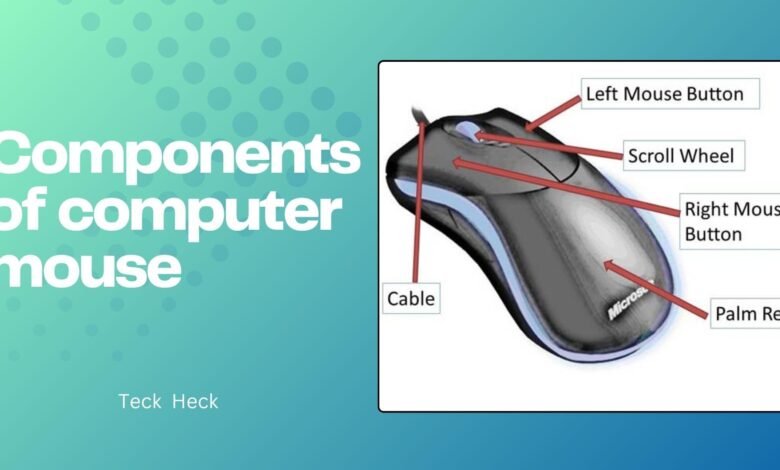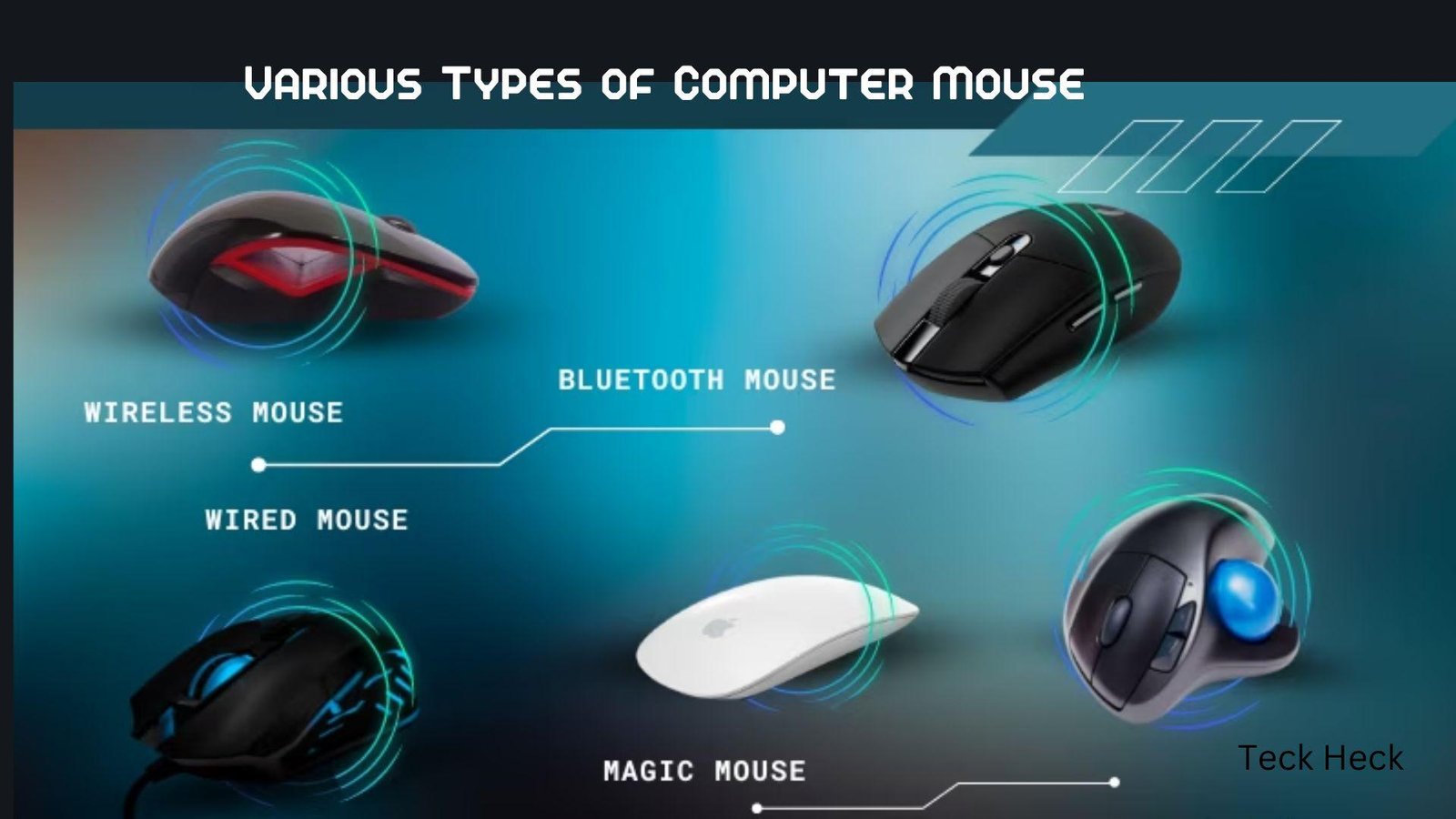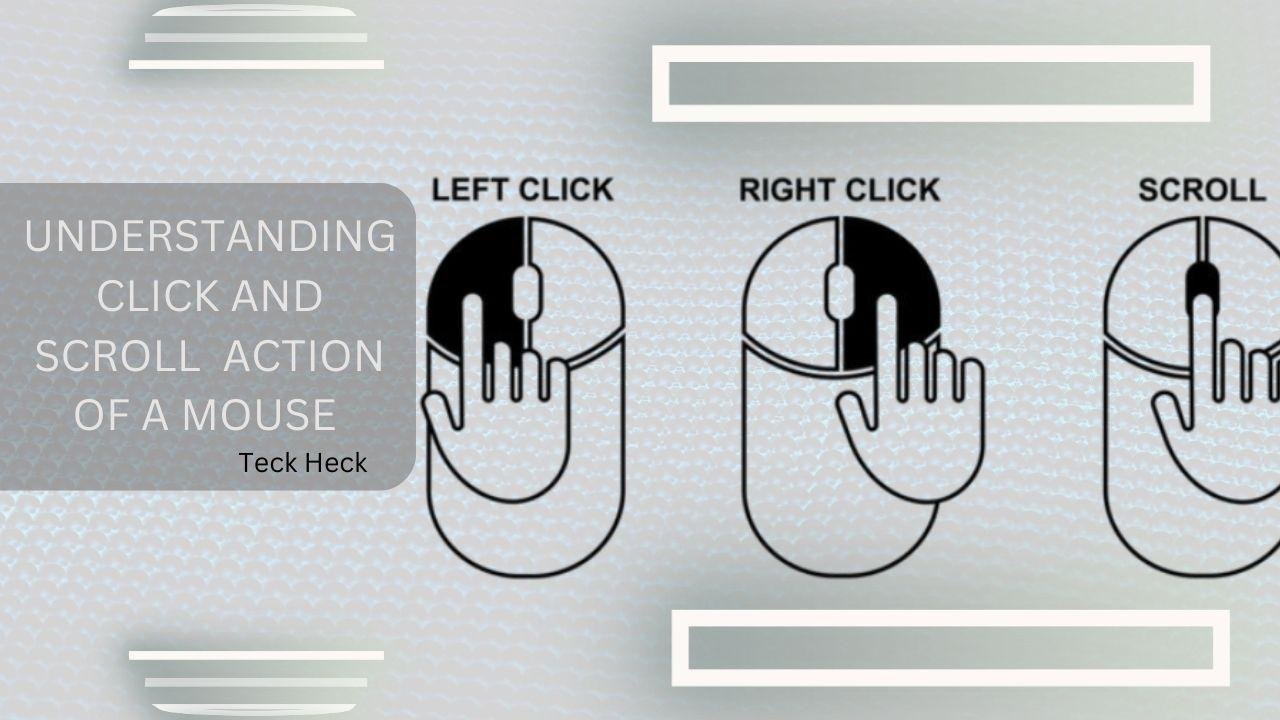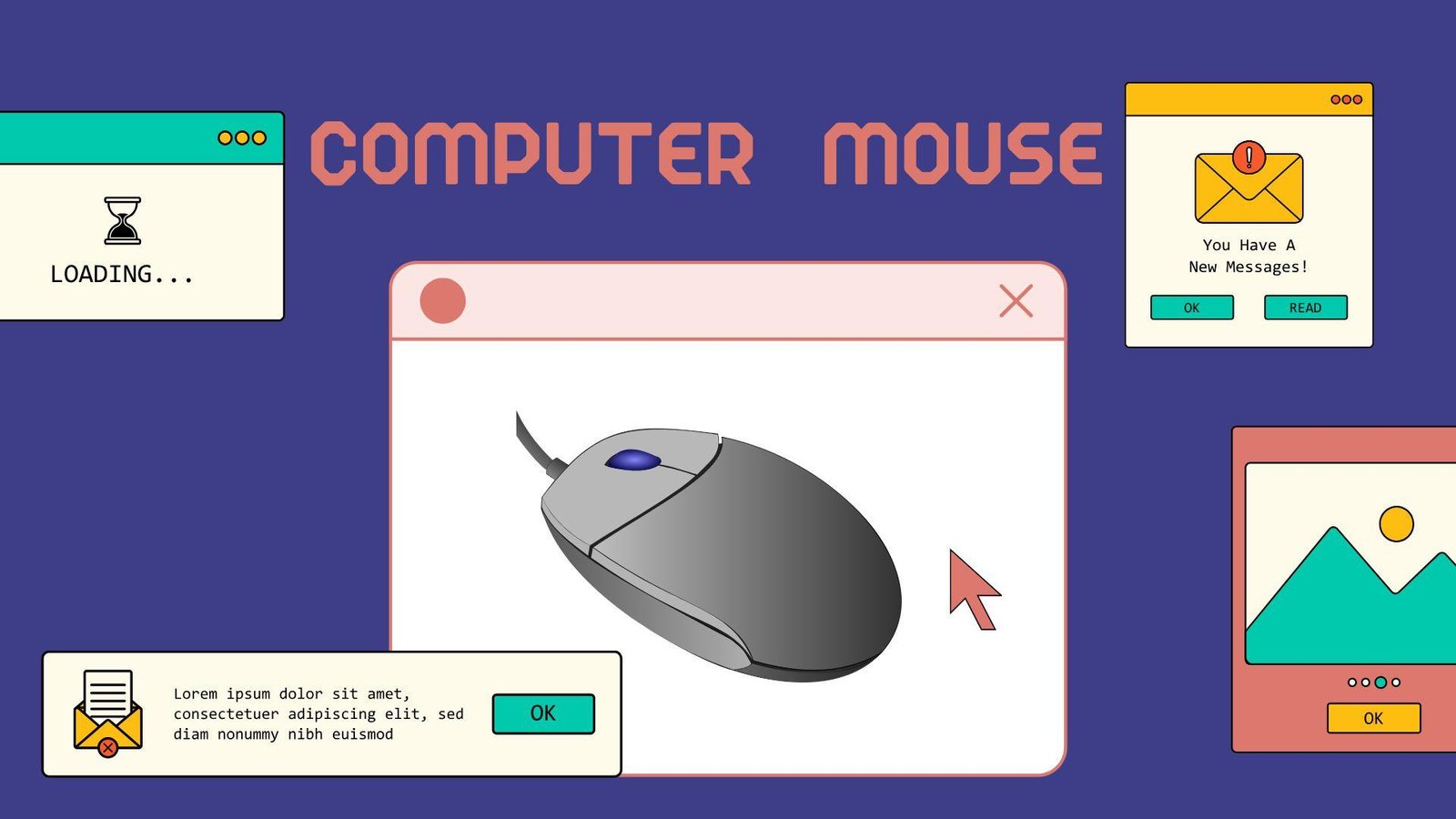
Computer Mouse
A computer mouse is a portable input tool that enables users to interact with the graphical user interface (GUI) of a computer. In order to facilitate navigation, selection, and command execution, it is made to convert the user’s bodily movements into on-screen activities. The mouse is an essential tool for effective computing, whether it is connected via wired or wireless technology.
Computer mouse come in various forms, including trackball, mechanical, and optical mice. Optical mice are precise and long-lasting because they detect movement using LED or laser sensors. Although they are becoming less popular, mechanical mice use a rolling ball to track motion. In contrast, trackball mice are stationary devices that allow users to move by manipulating a ball. Additional features like programmable buttons, ergonomic designs, and customizable sensitivity (DPI) are frequently included in modern computer mouse models. These improvements serve a variety of purposes, including daily chores, gaming, and graphic design.
The computer mouse is essential for both novice and expert users because it makes it possible for intuitive computer interaction. It is still one of the most well-known and often used computer accessories due to its adaptability and simplicity of use.

Types of Computer Mouse
The computer mouse is a flexible input tool that has changed to accommodate users’ various needs. Mice have evolved into many different varieties over time, each with special traits and abilities. By being aware of these varieties, users can select the best computer mouse for the job at hand.
-
Mechanical Mouse
A rolling ball was used by the mechanical mouse, one of the first kinds of computer mice, to sense motion. As the mouse moved, the ball would rotate, and internal sensors would follow the ball’s path and convert it into screen cursor motion. These mice were groundbreaking in their day, but because dust and grime may impair their functionality, they needed to be cleaned frequently.
-
Optical Mouse
A light-emitting diode (LED) and a motion-detecting sensor were used in place of the rolling ball in the optical mouse. In addition to increasing precision, this design did away with the maintenance required for a mechanical mouse. Although they may have trouble on shiny or reflecting surfaces without a mouse pad, optical mice are now the norm and function well on most surfaces.
-
Laser Mouse
The laser mouse is a variant of the optical mouse that improves precision by using a laser rather than an LED. This makes it perfect for jobs requiring a high level of sensitivity, including graphic design or gaming. The laser mouse is more adaptable than its optical equivalent since it can operate on a greater range of surfaces, including glass.
-
Wireless Mouse
With the wireless mouse, you may move around more easily without being constrained by a cable. It uses a USB receiver or Bluetooth to connect to the computer. Modern wireless mice are a popular option for both experts and casual users due to their high responsiveness, long battery life, and portability. They might, however, need regular battery replacement or charging.
-
Trackball Mouse
With a trackball mouse, the user controls the pointer by rotating a huge ball that is stationary. Because of its ergonomic design, this kind of computer mouse is ideal for people with small desks. Because of its accuracy and controllability, it is also widely used in specialist industries like video editing and computer-aided design (CAD).
-
Gaming Mouse
High DPI (dots per inch) sensitivity, programmable buttons, and adjustable illumination are features of the gaming mouse, which was created especially for gaming. These features enable players to execute intricate movements with speed and accuracy. Additionally, gaming mice are ergonomically designed to be comfortable for prolonged use.
-
Touch Mouse
Without the use of physical buttons or a scroll wheel, users may execute movements like swiping and scrolling with a touch mouse’s touch-sensitive technology. This sleek, contemporary mouse is a great addition to gadgets with touch-based interfaces.
-
Vertical Mouse
An ergonomic choice that lessens wrist strain is the vertical mouse. It is appropriate for users who spend a lot of time at a computer because of its upright form, which puts the hand in a more natural stance.
To accommodate varying user needs and preferences, the computer mouse has evolved into a variety of kinds. Every variety of mouse, from the traditional mechanical mouse to more sophisticated choices like gaming and vertical mice, has special advantages. A computer mouse’s intended application, comfort level, and functionality are all important considerations.
Components and Working Mechanism
A computer mouse is a multipurpose tool that is essential for using and navigating computers. It transforms clicks and physical motions into digital signals that the computer can understand and use as commands. The meticulously crafted parts and accurate operation of a computer mouse are what make it so effective. Let us examine these elements in more detail.

Components of a Computer Mouse
A typical computer mouse consists of the following components:
Buttons:
Most mice come with typical left and right buttons, which allow for primary and secondary functions like clicking and selecting. Some models have extra buttons, including side buttons for shortcuts or special commands.
Scroll Wheel:
Users can scroll vertically through documents or web pages with the scroll wheel, which is situated between the two primary buttons. Additionally, some sophisticated mice have clickable scroll wheels or horizontal scrolling.
Power Source:
Rechargeable cells or batteries are necessary for wireless mice to function.
Outer Casing:
The mouse’s housing guarantees a pleasant grasp for the user while safeguarding its internal components.
Connection Interface:
Wireless mice communicate using Bluetooth or a USB receiver, whereas wired mice connect to the computer via USB or PS/2 cords.
Circuit Board:
Signals from the buttons and sensor are processed by the circuit board inside the mouse. These inputs are transformed into digital data that the computer can understand.
Sensor:
The sensor is in charge of tracking the mouse’s movement and can be either optical or laser. Laser sensors use concentrated laser beams to provide higher accuracy than optical sensors, which use LED light.
Working Mechanism of a Computer Mouse
Movement Detection:
The sensor is in charge of tracking the mouse’s movement and can be either optical or laser. Laser sensors use concentrated laser beams to provide higher accuracy than optical sensors, which use LED light.

Data Processing:
The circuit board receives the motion data that the sensor has recorded. To ascertain the movement’s direction and distance, the signals are processed here. Cursor motion on the screen is represented by digital signals that are converted from these computations.
Cursor Movement:
The computer receives the processed data and uses it to update the location of the cursor on the screen. The cursor provides real-time feedback by imitating the mouse’s movements.
Click and Scroll Actions:
The circuit board records inputs such as button clicks and scroll wheel rotations and transmits the appropriate signals to the computer. In response, the computer performs commands like highlighting text, opening a file, or navigating through material.
The computer mouse combines software and hardware components to provide smooth computer interaction. It is an essential instrument for both professional and recreational use due to its well-designed parts and effective operation. The computer mouse is a vital component of contemporary computing, from simple navigation to intricate commands.




